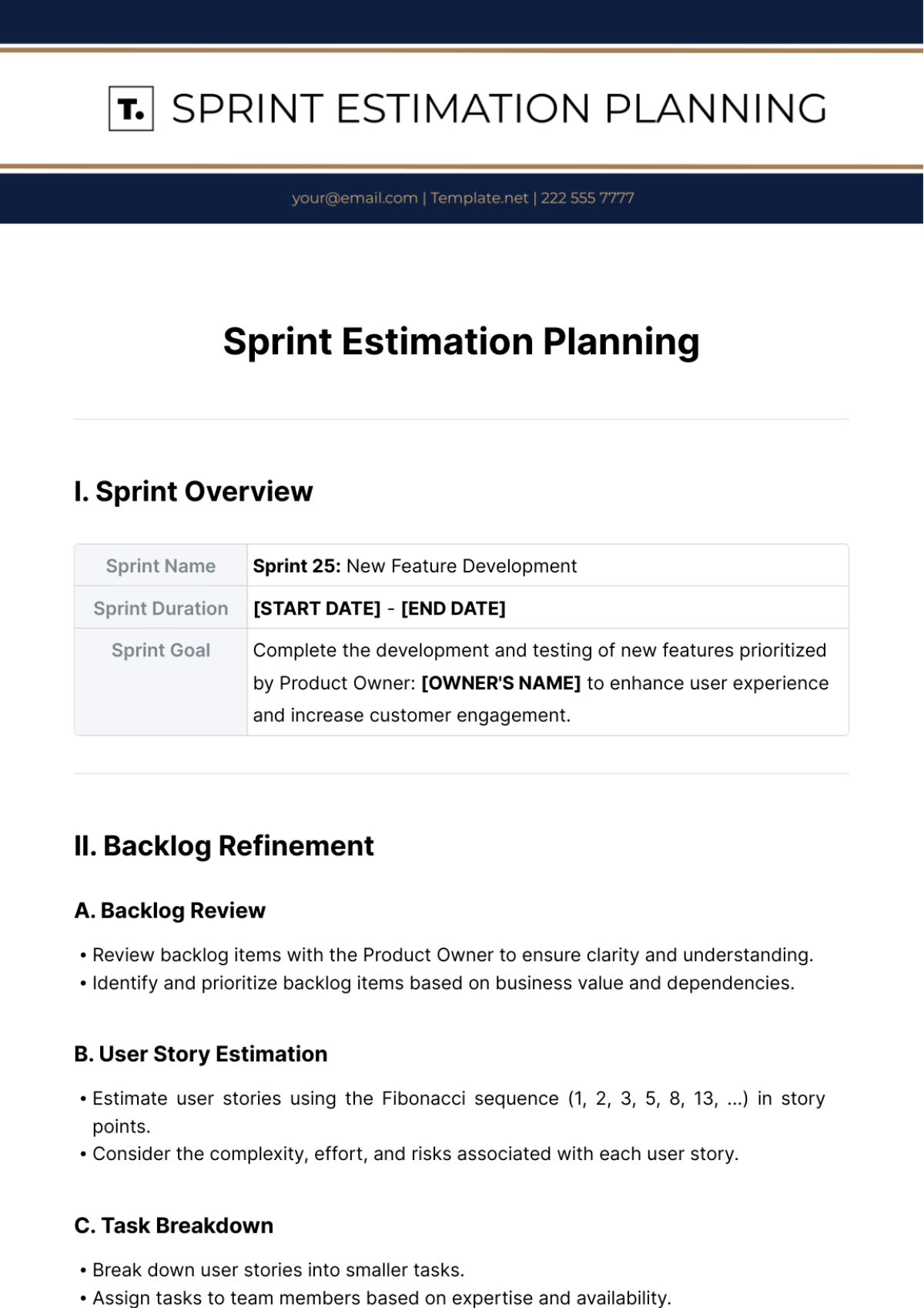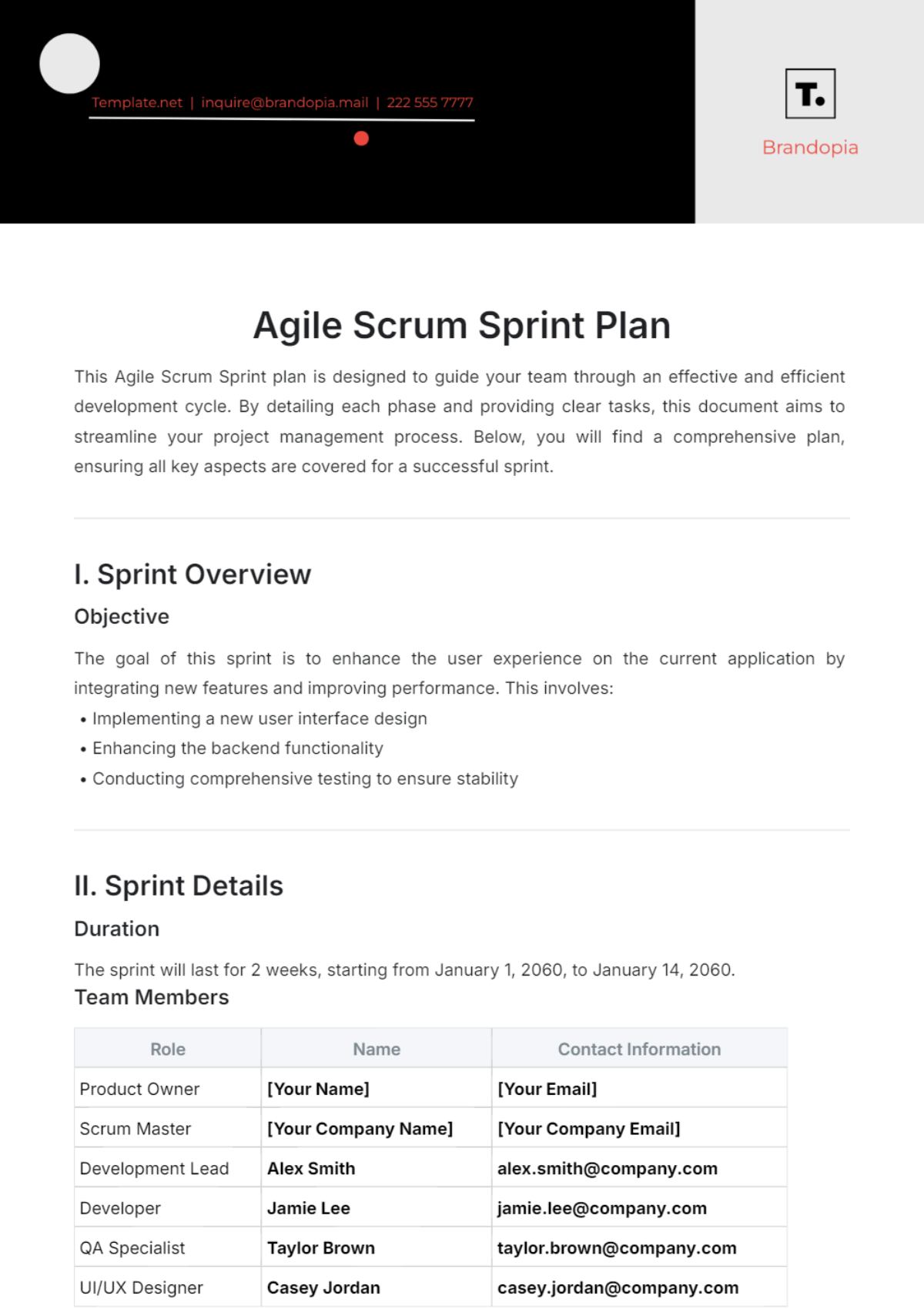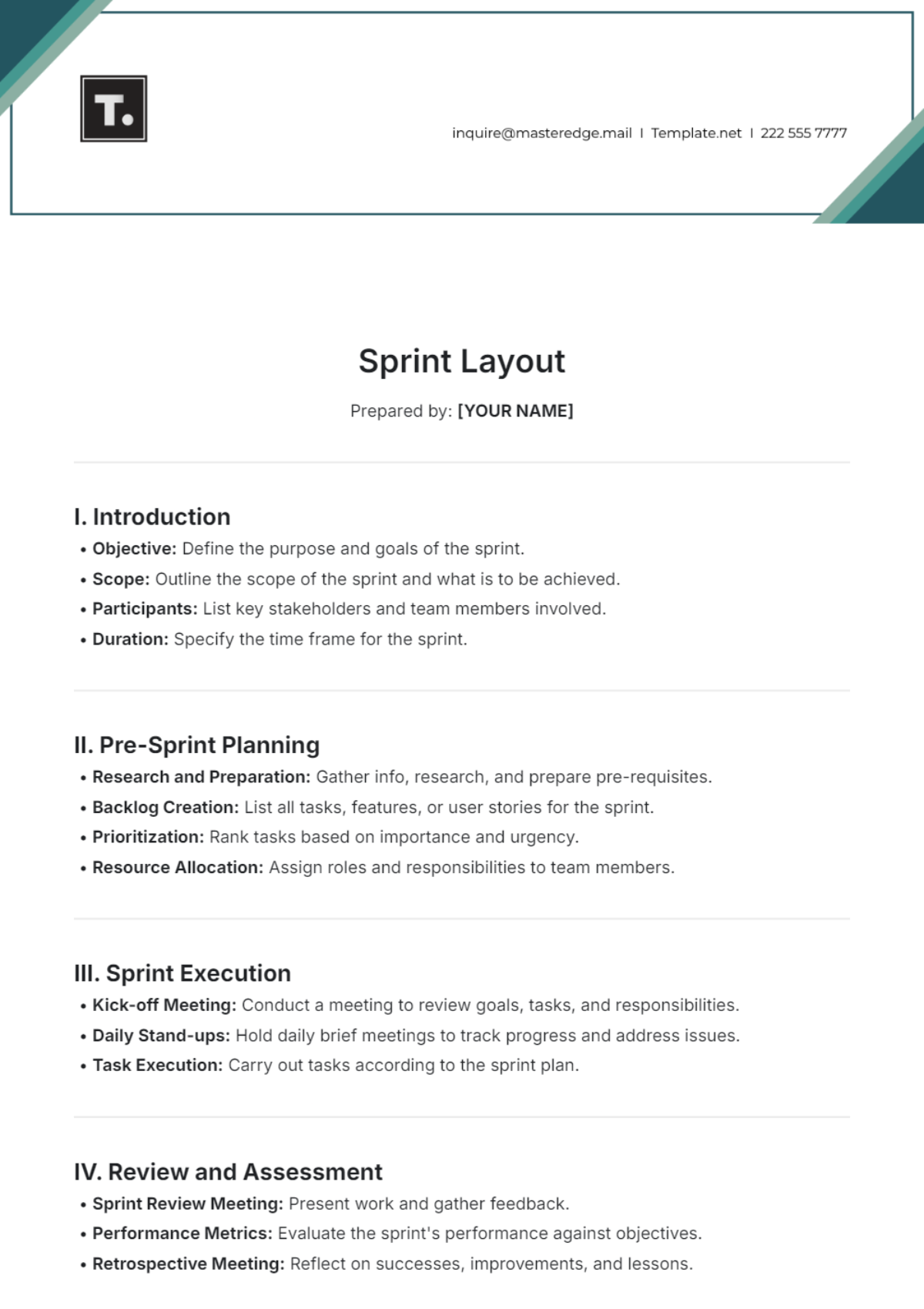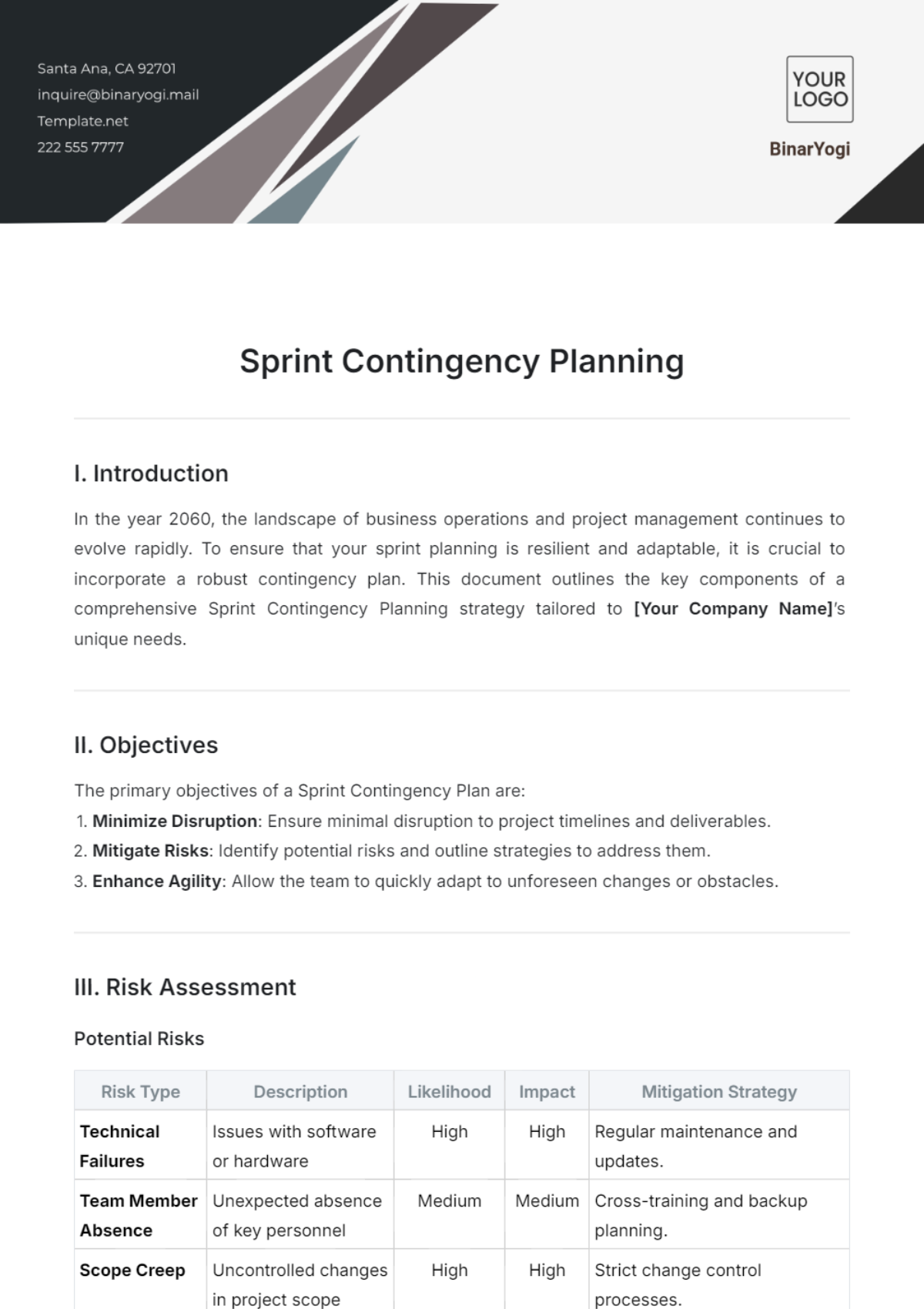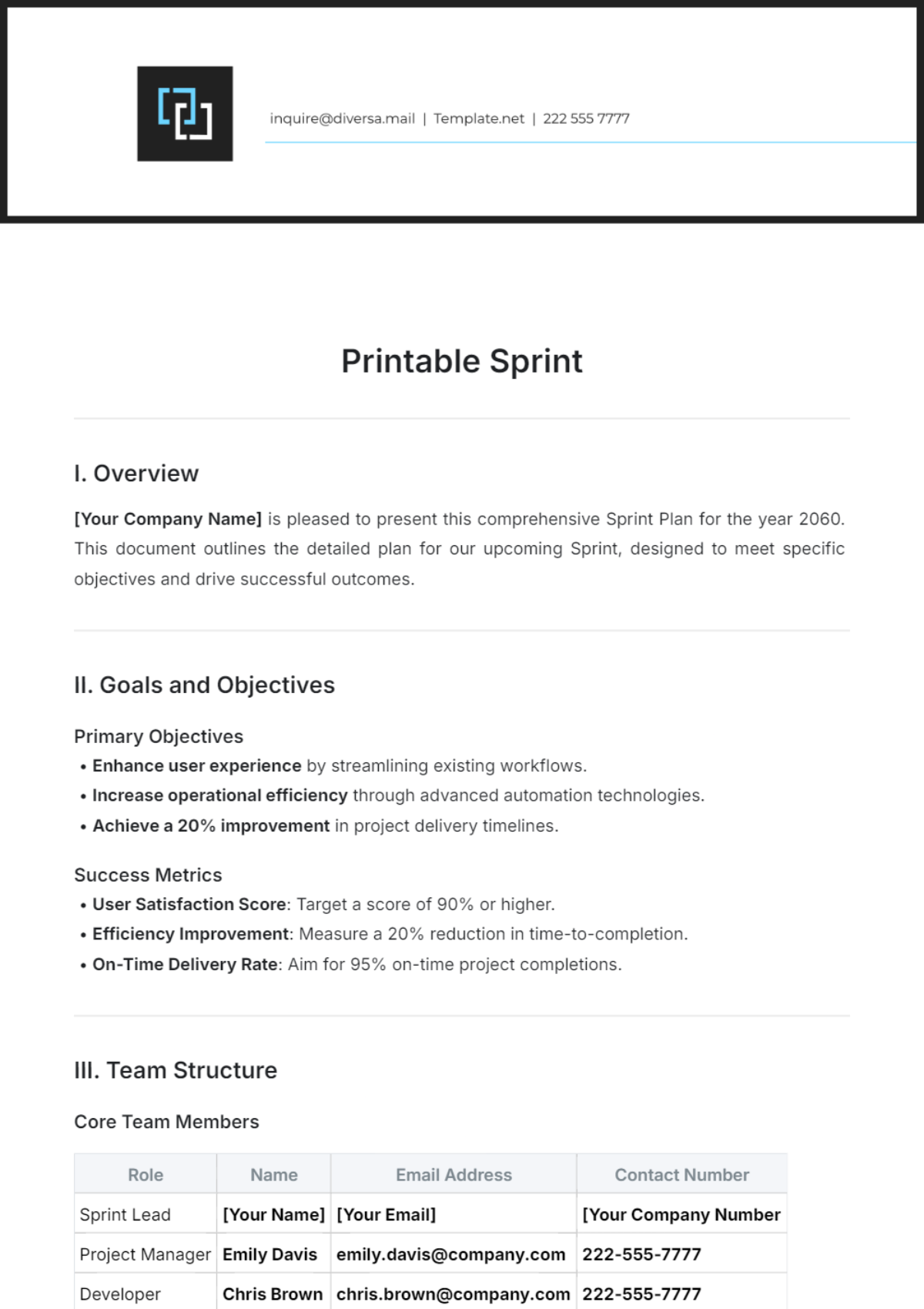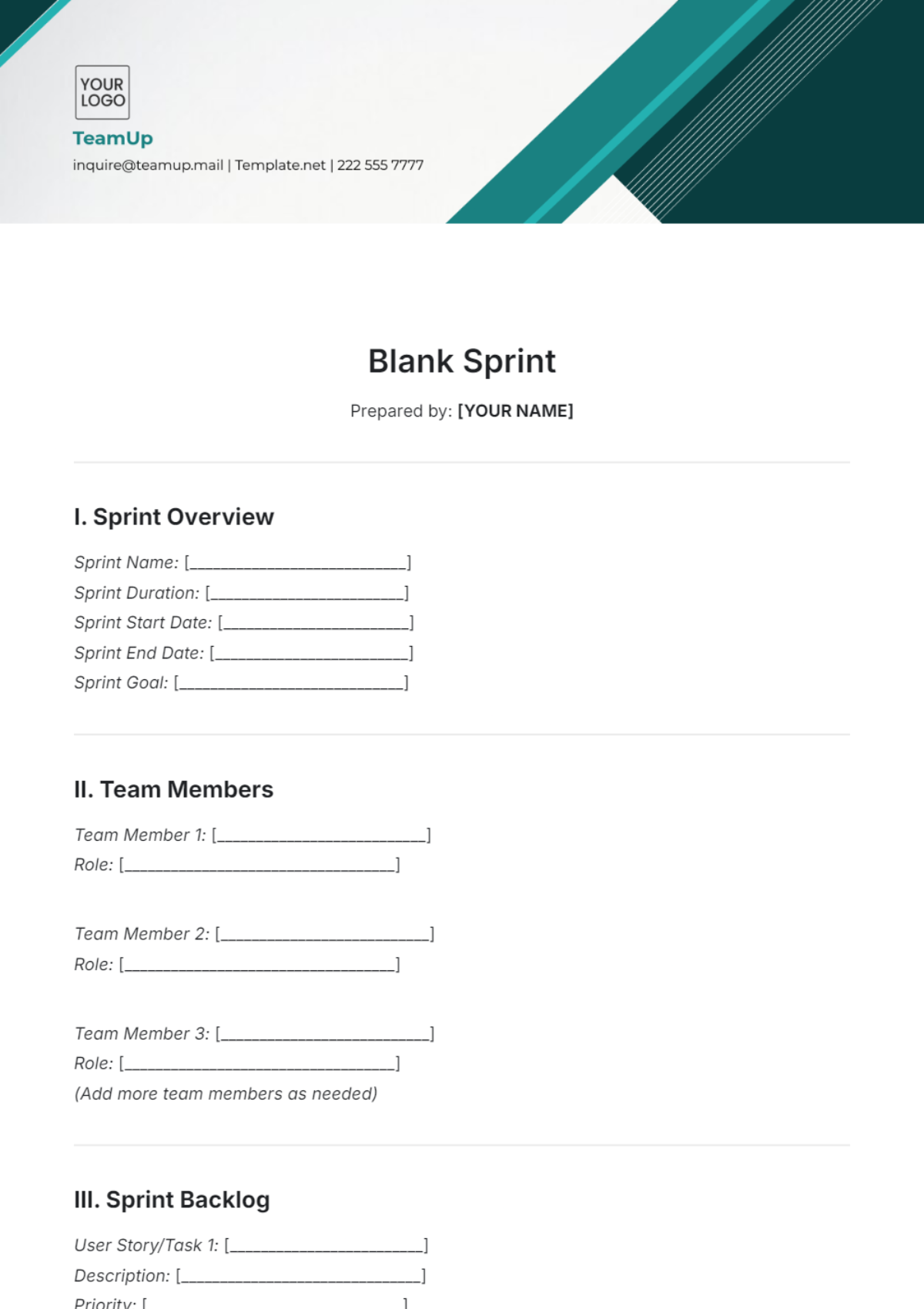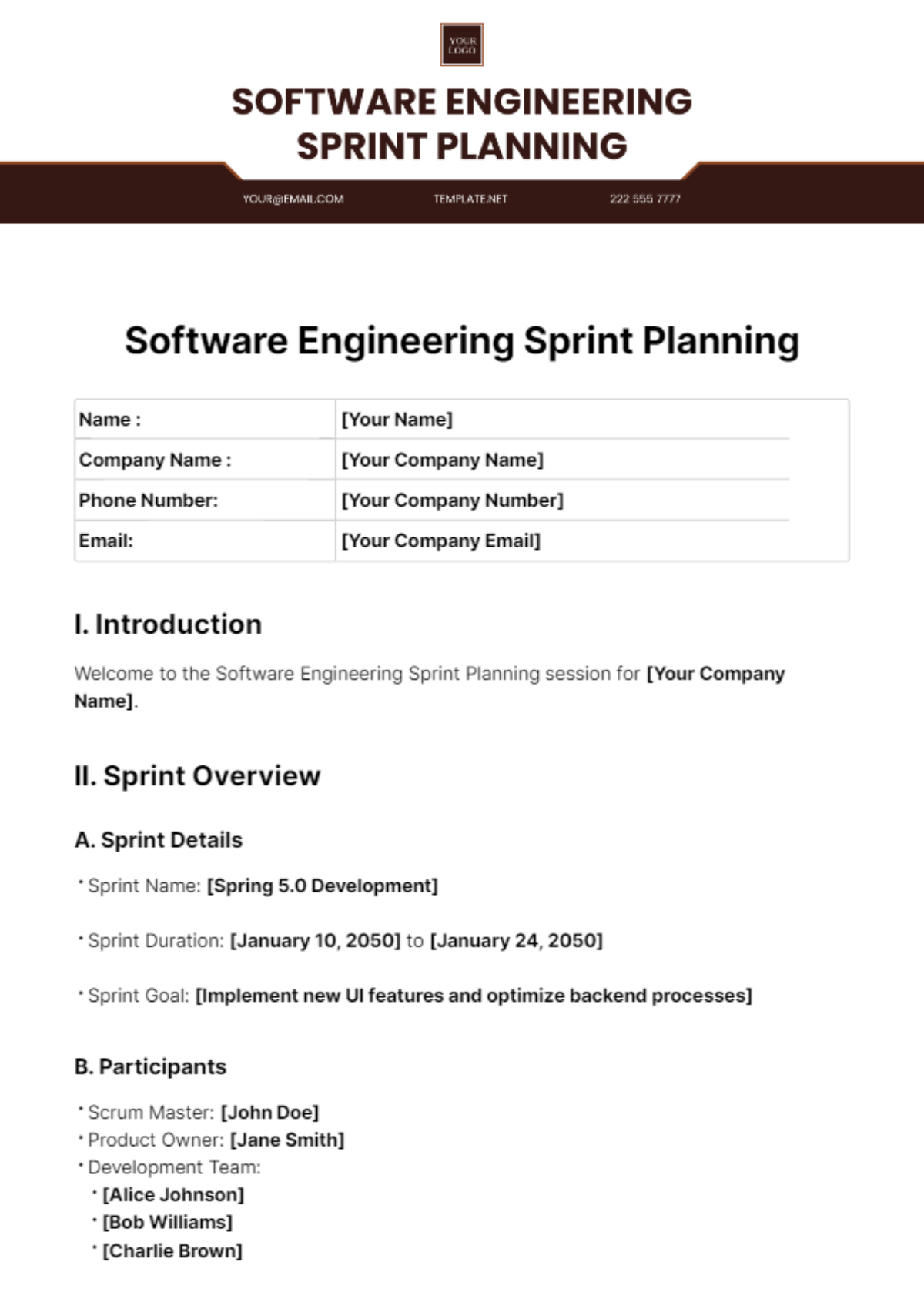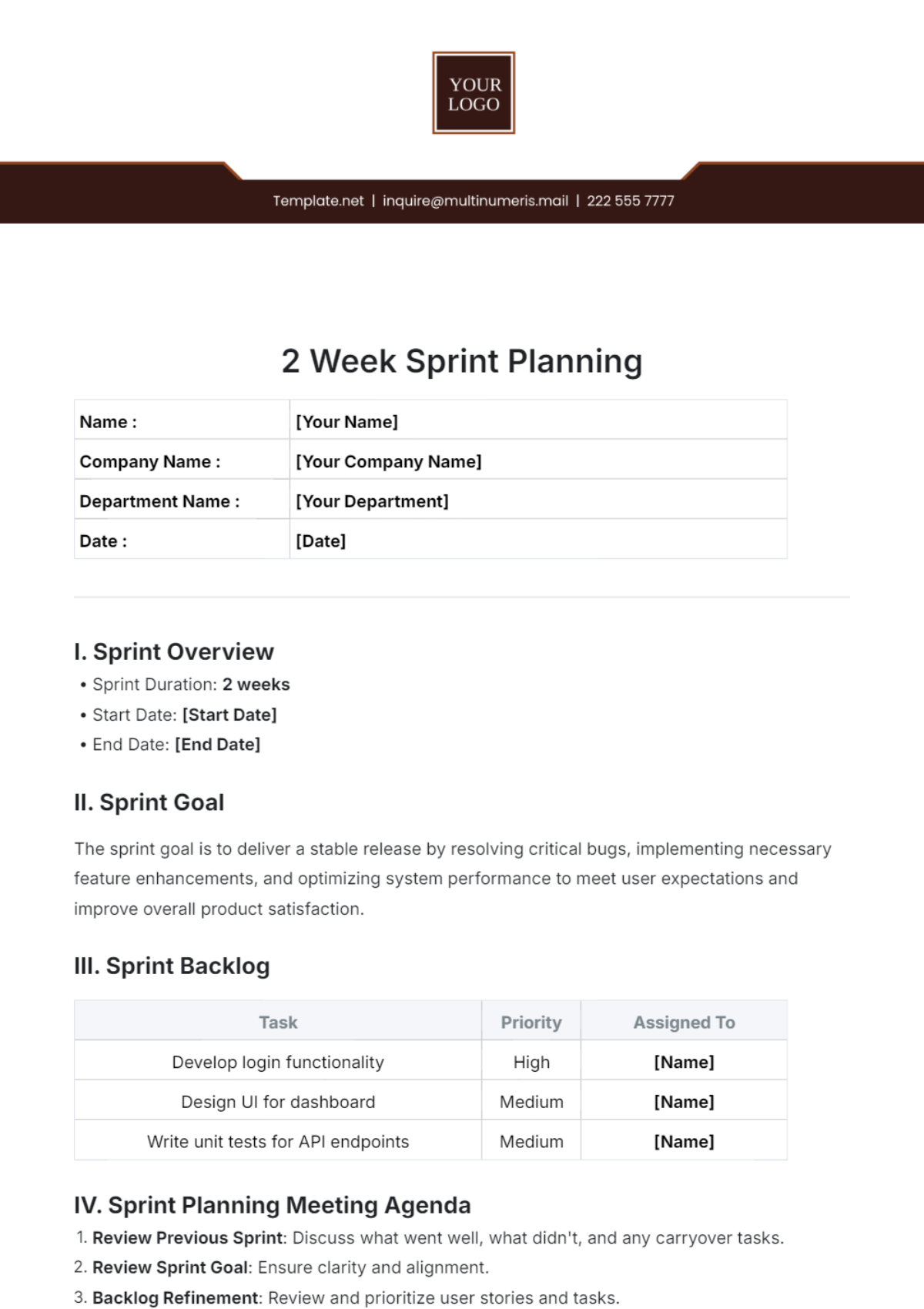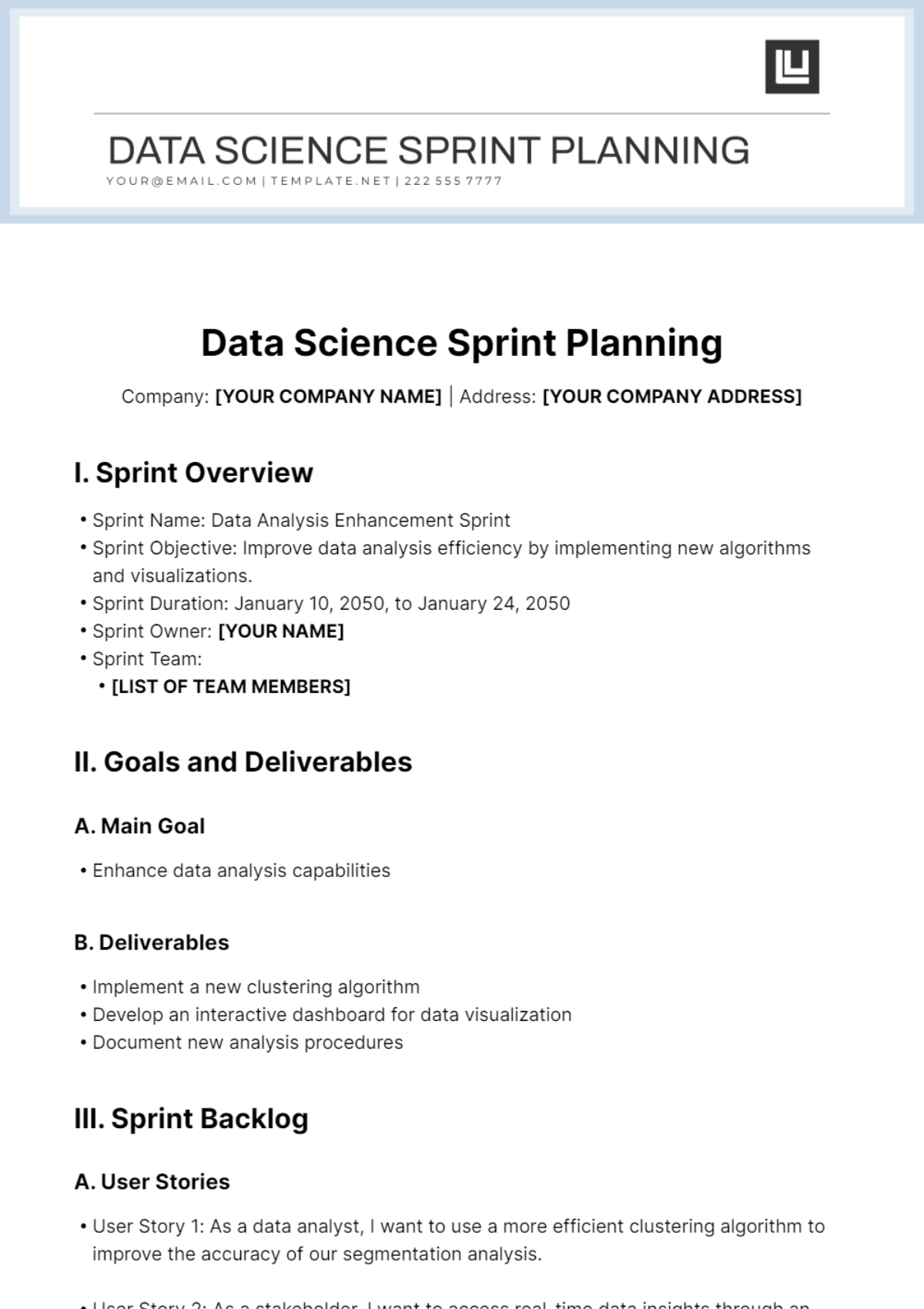Data Science Sprint Planning
Company: [YOUR COMPANY NAME] | Address: [YOUR COMPANY ADDRESS]
I. Sprint Overview
Sprint Name: Data Analysis Enhancement Sprint
Sprint Objective: Improve data analysis efficiency by implementing new algorithms and visualizations.
Sprint Duration: January 10, 2050, to January 24, 2050
Sprint Owner: [YOUR NAME]
Sprint Team:
[LIST OF TEAM MEMBERS]
II. Goals and Deliverables
A. Main Goal
Enhance data analysis capabilities
B. Deliverables
Implement a new clustering algorithm
Develop an interactive dashboard for data visualization
Document new analysis procedures
III. Sprint Backlog
A. User Stories
User Story 1: As a data analyst, I want to use a more efficient clustering algorithm to improve the accuracy of our segmentation analysis.
User Story 2: As a stakeholder, I want to access real-time data insights through an interactive dashboard for better decision-making.
User Story 3: As a team member, I want clear documentation of the new analysis procedures to ensure consistency and ease of use.
B. Tasks
Task Description | Assigned To | Estimated Effort | Status |
|---|---|---|---|
Research and select clustering algorithm, Implement clustering algorithm | Data Scientist | 8 hours, 16 hours | In Progress, Not Started |
Design and develop a dashboard | Data Engineer | 20 hours | Not Started |
Create documentation for new procedures | Data Analyst | 12 hours | Not Started |
C. Acceptance Criteria
The clustering algorithm is integrated into the data analysis pipeline and improves accuracy by at least 10%.
The dashboard allows stakeholders to interactively explore key metrics and trends in the data.
The documentation is comprehensive and easy to understand, providing step-by-step guidance for the new analysis procedures.
IV. Sprint Schedule
January 10, 2050: Sprint Planning Meeting
January 11, 2050: Daily Standup Meeting
January 17, 2050: Mid-Sprint Review Meeting
January 24, 2050: Sprint Review and Retrospective Meeting
V. Risks and Dependencies
A. Risks
Limited availability of data for testing new algorithm
Complexity of dashboard design may lead to delays
B. Dependencies
Availability of stakeholders for dashboard feedback
Completion of clustering algorithm implementation before dashboard development
VI. Resources
Tools: Python, R, Tableau
Datasets: [DATASET NAME]
References: [LIST OF REFERENCES]
VII. Communication Plan
Channels: Slack for daily updates and email for weekly progress reports.
Frequency: Daily standup meetings and weekly progress reports.
Updates: Sprint progress updates are shared during standup meetings and via email.
























